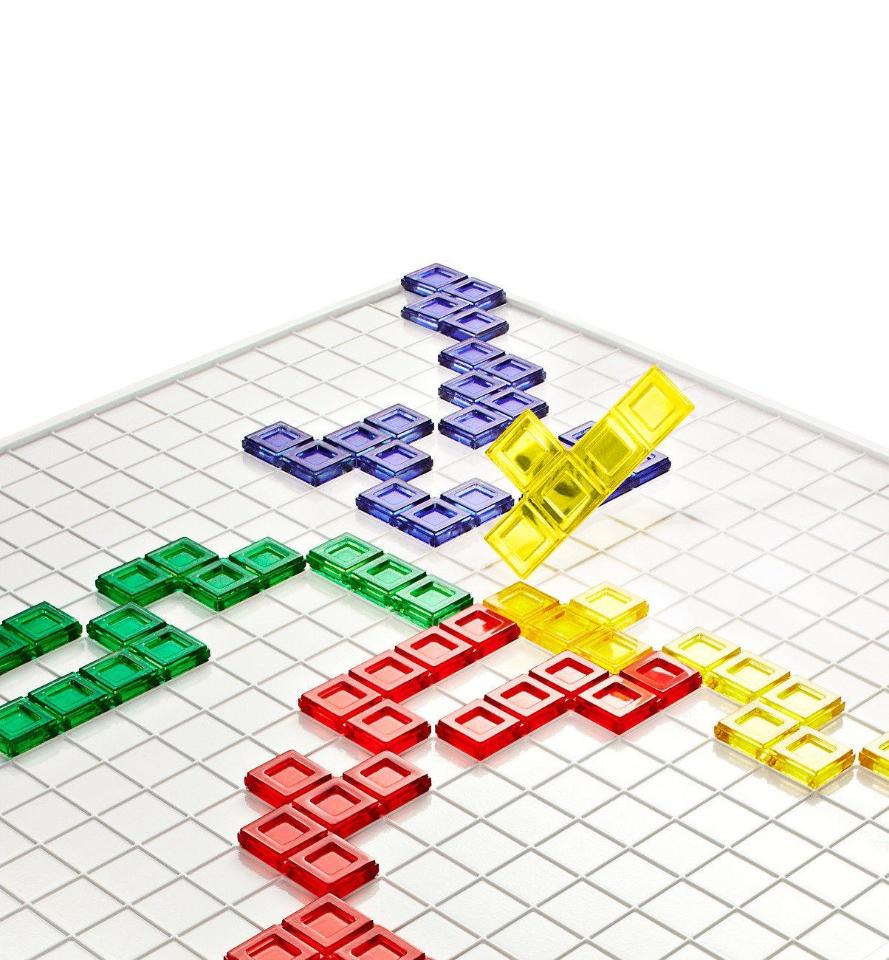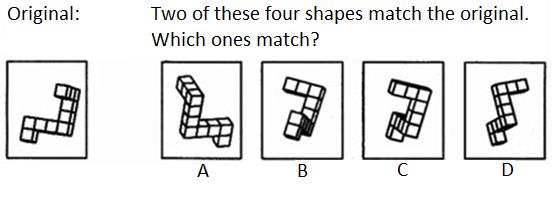Blokus - Cooperative Variation
Players: 2 or 4
Ages: 5 and up
Purchase: Buy on Amazon (affiliate link)
Math Ideas: Spatial reasoning
Questions to Ask:
Which pieces should we get rid of first? Why?
What pieces of mine can fit in the gaps between your pieces?
If you've been reading Games for Young Minds since the beginning, you know one of my absolute favorite games is Blokus. The game is incredibly easy to learn, accessible to kids of almost all ages, and still fun for adults.
I've been wanting to share the game again, especially since my readership has grown so much since November 2017! Fortunately, I have just the excuse: Over the winter holiday, I came up with a fun, cooperative twist on the game that has been a big hit at home.
So let's visit, or revisit, one of the greatest little games out there.
How to Play
The classic version of Blokus, which is briefly described below, plays best with either two or four players.
Each player begins with 21 pieces that look like variations of Tetris blocks. Some pieces are composed of only two or three squares, while others have four or five squares. The board is a blank 20x20 grid. Starting in the corners, each player takes turns placing one of her pieces on the board. The only rule is that each player's pieces must touch another of its pieces at the corner, without overlapping sides.
Players take turns until they can no longer make a move. Once all players are stuck, everyone adds up the total amount of squares that they were not able to play. The lowest score wins. Mattel has made a quick gameplay video tutorial that you can check out.
So for my cooperative variation, I change only one rule: All the players are working together to try to place every piece in the entire game.
That's it! Seems so simple, right? And yet it has been such a brainbendingly fun challenge for me and my kids.
Where's the Math?
Blokus is a fantastic game to help kids develop their spatial reasoning. In layman’s terms, spatial reasoning is how people make sense of objects, their shapes, and how they relate to each other. If you’ve ever navigated the mall using a map or tried to assemble IKEA furniture from a set of instructions, you’ve used your spatial reasoning skills. Your child is using those same skills when she tries to jam a puzzle piece in the wrong spot before rotating it and finding its home.
Researchers have spent a lot of time studying spatial reasoning using tasks like the one above, and they've learned some interesting things. First of all, spatial reasoning is predictive of later success in math. Not only that, people in STEM careers show a higher level of spatial reasoning than equally intelligent peers in other careers. Fortunately, spatial reasoning is not some innate trait your child is born with. Instead, it is a skill that can be learned over time.
Both variations of Blokus, cooperative and competitive, are equally good at developing spatial reasoning. As you and your child play the game, you'll be mentally rotating and flipping your pieces, trying to find spaces where they will fit.
The only difference is, in the cooperative version you'll be able to easily discuss your ideas and plans with each other, which will allow your child to start developing terminology for their spatial thinking. This skill, of putting their thinking into words, is another way to deepen the spatial connections that your child is making.
Questions to Ask
I would suggest playing the game through once, just to see how close you get to winning! I promise, it's not as easy as it seems. While you're playing, help your child see the big picture by asking "Which of my pieces can fit in the gaps between your pieces?" This will get your kids looking up from their own pieces and starting to view the big picture of the board.
Once you've played through once, you can ask "Why do you think we lost? What could we do differently next time?"
These questions get your child thinking strategically, rather than simply playing pieces randomly at the start of the game.
As a follow-up, you could ask "Which pieces were hardest to place latest in the game? How could we use those pieces earlier?" As you and your child play more than once, certain pieces will routinely cause you trouble. Perhaps you can plan your moves so that they have perfect spots!
If you're starting to get frustrated, you can always say "Forget the rules! Let's just try to fit all the pieces on the board together."This is still quite a challenge for kids, and it's a great way to blow off steam if you haven't yet conquered the cooperative version of the game.
By the way, if you do win Cooperative Blokus, please take a picture and share it with me! I'd love to share some solutions in a future newsletter.
Click here to buy Blokus on Amazon (affiliate link)





